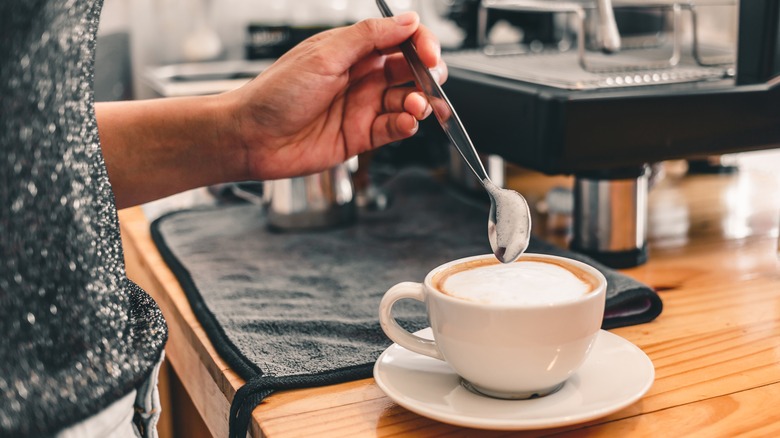The Simple Microwave Trick To Top Your Coffee With Frothy Milk
Making your coffee at home is one of the best ways to cut down on café expenses, but it's easier said than done if your regular caffeine of choice is a bit more complicated than a simple pour-over or latte. If you're the kind who can't live without a foamy, hand-made cappuccino to start your mornings, you might be happy to hear that you probably already have everything you need to make smooth frothed milk at home. You won't even need gadgets to froth your milk without a steamer like frothing wands and French presses: If you have a microwave and a mason jar, you're all set to start making cappuccinos at home.
It's as simple as shaking the milk in a mason jar and then microwaving it to set the foam. What you're essentially doing is replicating the two most important parts of how a milk steamer works: Injecting agitation and air bubbles, then heating up the milk to stabilize it. The heat relaxes the naturally tightly wound proteins in the milk, allowing them to expand and wrap around the air bubbles for a smooth and stable froth.
How to use the microwave method of foaming milk
While a mason jar is the simplest container to use for this, it's not necessarily mandatory. Any clean, microwave-safe container with a leak-proof lid will do, preferably non-porous material like treated ceramic and glassware. What you'll want to do is fill up the container no more than halfway, close the lid, and then give it a nice and vigorous shake for at least 30 seconds. If you're feeling extra keen on more foam, you can shake it for up to 60 seconds to boost the volume. After that, you'll want to completely remove the lid — regardless of if it's metal or not — and microwave the shaken milk for 30 seconds.
Technically speaking, whether you shake or heat the milk first doesn't affect the quality of the froth at all. However, shaking any kind of heated liquid in an airtight container is extremely inadvisable: At best, it'll make the container hard to open, and at worst, the expanded and agitated air will shatter the container and possibly injure you. If you have your heart set on heating the milk first, either via the microwave or stovetop, then the frothing will have to happen in an unsealed container like a French press or in the open air with a frother or whisk.

